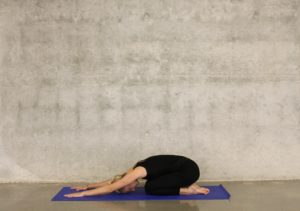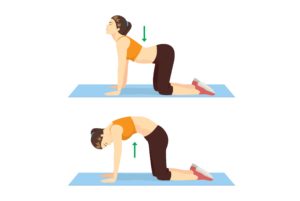 Staying home the past few months has stressful on everyone. You could be spending more time sitting around, or on the other hand, you could be doing more chores around the house like spring clean ups. Whether you’ve decreased or increased your activity level, that combined with the emotional toll of quarantine can contribute to muscle tightness, stiffness, and spasms.
Staying home the past few months has stressful on everyone. You could be spending more time sitting around, or on the other hand, you could be doing more chores around the house like spring clean ups. Whether you’ve decreased or increased your activity level, that combined with the emotional toll of quarantine can contribute to muscle tightness, stiffness, and spasms.
Muscle spasm happens when muscles tense up and stay contracted. It can also lead to trigger points which are muscle knots or taut palpable bands. It can often feel like a twitch and the feeling can range from mildly annoying to intensely painful and debilitating. Causes can include overuse injury, chronic pain and injury, mental or emotional stress, repetitive strain, and electrolyte imbalance. Symptoms can include tension, trouble moving, intense pain, weakness in the neck/back, or a cramping sensation. Spasm can be acute (a sudden attack of pain linked to a specific activity or event), or chronic (constant discomfort that is not linked to a specific injury).
If you are experiencing a muscle spasm or a trigger point you can try some of these home self-care remedies:
- Try basic yoga postures such as child’s pose or cat-cow (see illustration below) to gently stretch the muscles in your back.

- Massage by putting firm pressure on the affected muscle, using a handheld massage device to help relieve muscle tightness. You can also try lying on a tennis ball or using a foam roller to work out the knot or spasm.
- If you’ve been injured, first ice and then apply moist heat.
- Continue with mild exercise. Just walking helps to loosen your back muscles. You can also try riding a stationary bike or simply walk up and down your stairs a few times.
- Try a topical cream that is made specifically for relieving muscle pain and spasms. You can get many different varieties over the counter at your local pharmacy.
- Deep breathing meditation can help you relieve stress and tension which can reduce pain and muscle tightness.
- Drinking enough water is so important in reducing as well as preventing muscle spasms.
- Practice good posture while sitting, standing, and sleeping.
- Make sure you use proper lifting habits. When lifting and carrying heavy or cumbersome items, keep your back straight and bend at your knees.
If your spasms or trigger points don’t go away in a few days this could be reflective of an underlying spine condition that needs to be evaluated. If you are experiencing persistent neck or back pain and spasm call check in with your healthcare provider.
David J. BenEliyahu, DC, DAAPM, DABCSP is the Administrative Director of the Back & Neck Pain Center at Mather Hospital.

